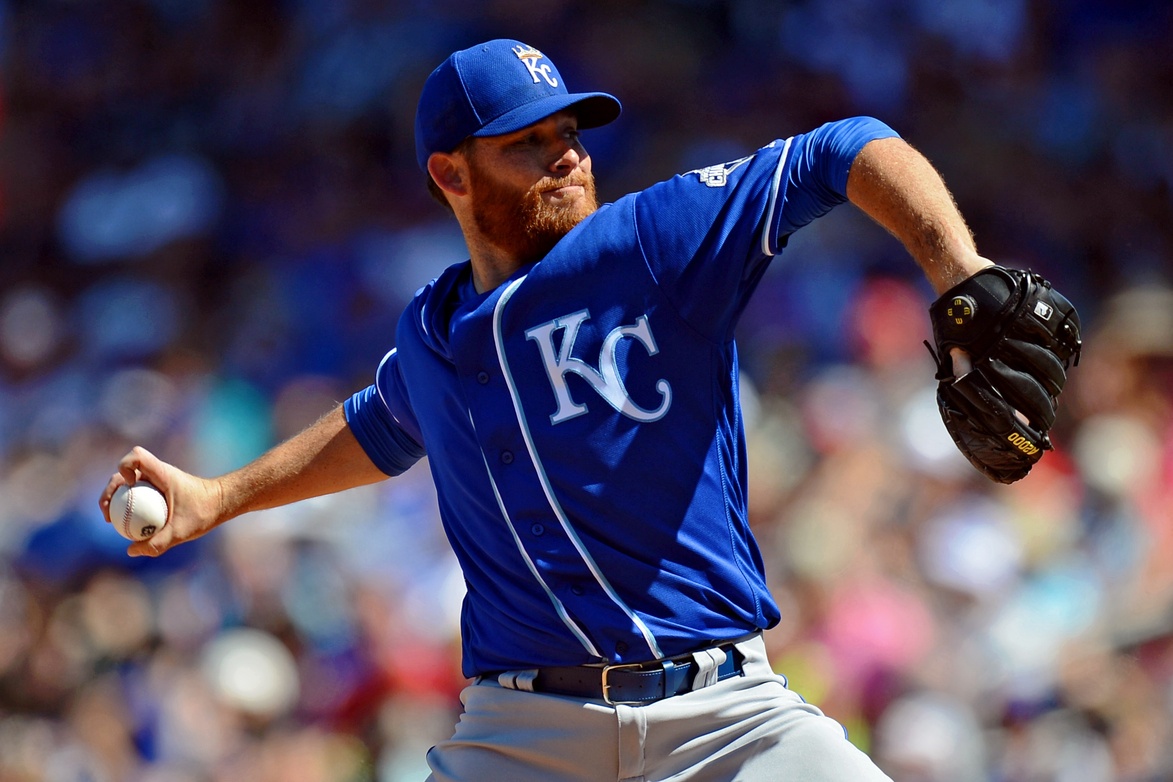When you think of Ian Kennedy, what do you think of? If you’re like me, you probably think of home runs. Kennedy has allowed a lot of dingers in his career – 153 of them, to be exact – and he’s had a significant problem with them over the last few years, so thinking of homers makes sense.
You might also think of durability. Over the last four years, only ten pitchers in all of baseball have made more starts than Kennedy, who has taken the ball 127 times. The last time Kennedy didn’t make at least 30 starts was 2009. So yeah, the durability angle checks out.
Maybe you think of money, because Kennedy is set to make a giant pile of it over the next five years. All three of these things are respectable answers.
What if I told you that when you think of Kennedy, you should also think of strike zone domination?
It probably sounds odd, and saying it aloud may even elicit a chuckle as you sit there at your desk, causing your coworkers to give you a confused side-eye. But it’s not nearly as crazy as you may think.
In 2012, Kennedy allowed a contact rate of 82 percent on swings at pitches in the strike zone (Z-Contact rate). That was the tenth-lowest rate in baseball, among the 117 pitchers who threw at least 2,000 pitches. In other words, he was in the 93rd percentile in this metric. Some of the pitchers who allowed more contact in the zone included Clayton Kershaw, Stephen Strasburg, Chris Sale, and David Price.
The following year, Kennedy allowed a Z-Contact rate of 83.5 percent, which put him in the 81st percentile. That rate again beat Kershaw’s, Strasburg’s, as well as Jose Fernandez’s.
The year after that, Kennedy allowed a Z-Contact rate of 80.6 percent, which was lower than all but six other pitchers in baseball. He was in the 96th percentile.
Last year, Kennedy allowed a Z-Contact rate of 83 percent, putting him in the 87th percentile.
In every year, Kennedy has gotten a whiff on at least 16 percent of opponent swings in the strike zone. That may not seem like a large number, but remember, major-league players tend to be good at hitting baseballs, particularly those thrown in the strike zone. Plenty of pitchers allow a whole lot of contact in the zone, and yet, Kennedy has done as well as just about anyone in baseball at avoiding that.
In fact, there are only three pitchers who have allowed a lower Z-Contact rate than Kennedy in each of the last four seasons: Marco Estrada, Max Scherzer, and R.A. Dickey.
That’s…an interesting collection of pitchers.
Dickey is a knuckleballer, and knuckleballers are weird, so I hesitate to even include him here, but technically he has done better in this area than Kennedy.
Scherzer obviously is an ace, easily one of the best pitchers in the game. He makes sense.
Then there’s Estrada, who’s inclusion I found even more surprising than Kennedy’s, to be honest. He doesn’t have an overwhelming arsenal of pitches, and he hasn’t really racked up strikeouts over the last two seasons, but he’s still been able to regularly miss bats in the strike zone. I’m guessing it has to do with his two main pitches (high fastball and changeup) being pitches that tend to generate plenty of swings and misses, but that’s something our friends over at BP Toronto can explore more thoroughly.
It seems prudent at this point to state that missing bats in the zone isn’t the only key to pitching success. If it were, Kennedy’s contract wouldn’t have been so heavily-criticized three months ago. It takes more than that to be successful. However, pitchers with the lowest Z-Contact rates tend to also be the ones at the top of most pitching leaderboards. Those with the highest Z-Contact rates are more likely to struggle throughout the year. It’s not a perfect correlation, but it lines up with common sense; allowing less contact is usually better than the alternative.
Kennedy has very good stuff, and that stuff is what helps him miss so many bats. He’s always been able to rack up strikeouts. The problems he’s faced arise when he doesn’t get whiffs, because opponents have done significant damage on the relatively rare occasions they do make contact.
The Royals hope their coaching staff and defense can help with the contact management side of things. But Kennedy isn’t starting from scratch. He has a promising base of skills, starting with his ability to miss bats in the strike zone.

3 comments on “Ian Kennedy’s Surprising Strike Zone Skill”
Comments are closed.